All football fans love a homegrown talent and none more so than the Anfield faithful.
Liverpool manager Jürgen Klopp embraces his club’s culture and traditions and gives opportunities to the club’s young talents.
So when injuries hit first choice Liverpool right-back Nathaniel Clyne in the 2016-17 season, Klopp looked to the academy graduates for a solution, rather than a stop-gap from the senior squad.
Enter Trent Alexander-Arnold, the Liverpool born youngster had been at the Merseyside club since he was 8 years old.
When the opportunity came knocking, the teenager grabbed his first team chance with both hands and has held on ever since.
We take a look at what Alexander-Arnold has done to cement his place as Liverpool’s first choice right-back.
Right Flank
Jürgen Klopp’s Liverpool, predominantly line up in a 4-3-3 formation.
The front 3 are very fluid and number 9 Roberto Firmino often drops deep both to receive the ball and to drag defenders out of position in what is known as a ‘false 9’ role.
This can create room for inverted wingers Sadio Mane and Mo Salah to attack, each cutting in centrally onto their preferred foot.
The midfield 3 typically organise with one player sitting deep in a covering/deep-lying playmaker role, a modern number 6.
The other two midfielders, Keita and Milner, are hardworking box-to-box central players, heavily involved in all phases of play whether attacking or defending.
That leaves both full-backs with the responsibility of providing width.
Wide options in attack are crucial when playing against compact and organised defences.
The profile of a quality full-back suited to this system is a youthful, very energetic, pacey, aggressive player who can dominate the flank on their own.
Trent Alexander-Arnold boasts all these qualities and more, playing with the maturity and character needed to fit seamlessly into a team with genuine world-class players like Alisson Becker, Virgil Van Dijk and Mo Salah.
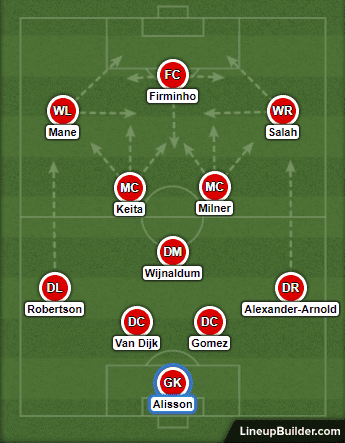
Liverpool have got off to a flying start in their 2018/19 Premier League campaign and have dominated most of the play in their 3 matches thus far.
Klopp’s Liverpool will look to maintain possession in their opposition’s half should their opponents look to sit in a deep defensive block, which is mostly what Liverpool have faced so far in games against West Ham, Crystal Palace and Brighton.
This has meant that attacking responsibilities have been Alexander-Arnold’s primary concern as he has spent the majority of his time in the opposition half.

Although he’s a right-back by trade, Alexander-Arnold has impressive passing stats this 2018/19 season for a defender, considering he has spent most of his time in the opposition’s half.
You can see in the image below that Alexander-Arnold gets a lot of touches of the ball (5th highest in the league this season), mostly making short passes to keep possession but also playing the ball forward in an attempt to break down the opposition’s defence.
Not many right-backs are utilised so heavily in possession.
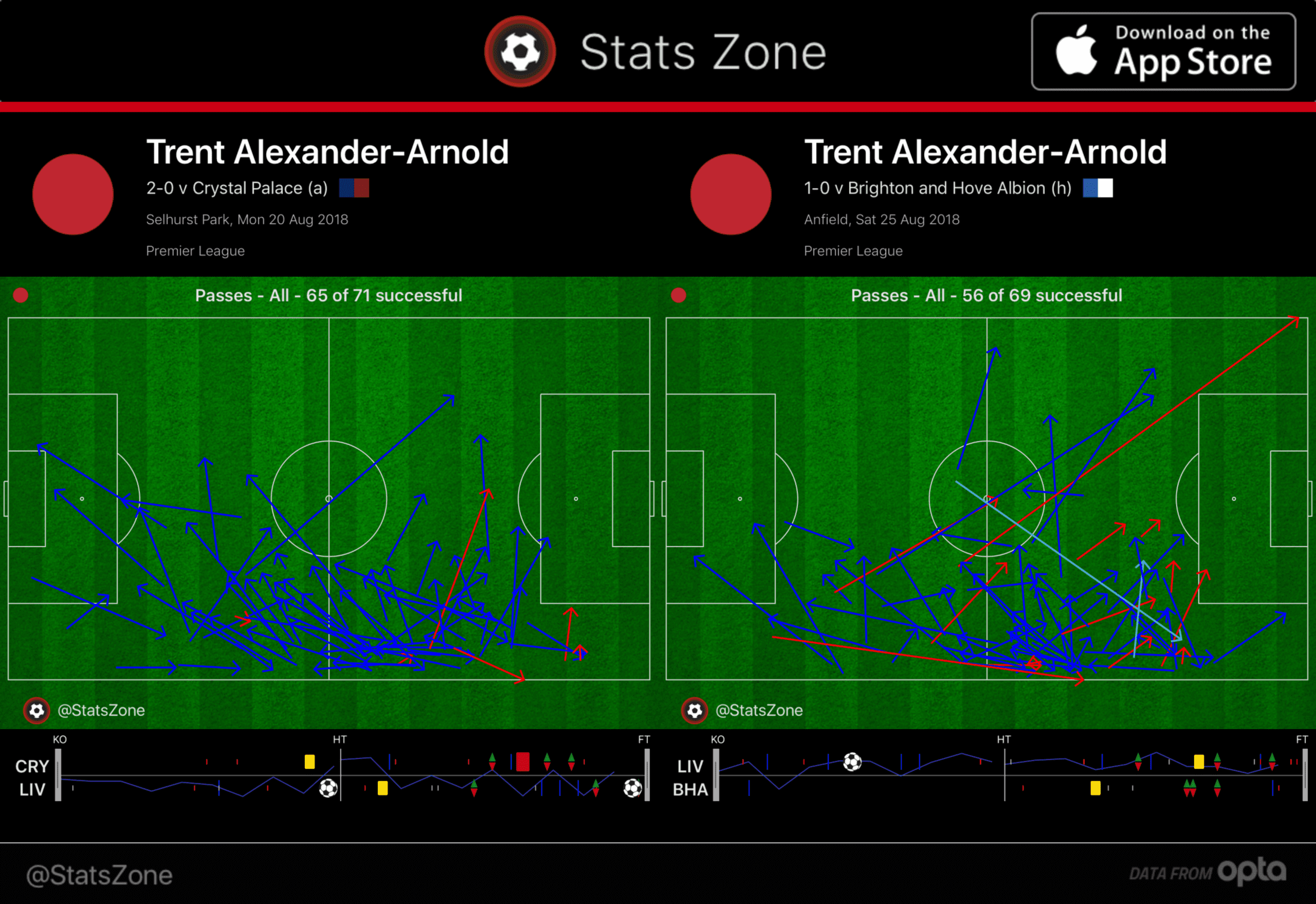
Creative Passer
Having played many of his academy years in midfield, Alexander-Arnold possesses an excellent passing range, not typical for full-backs.
His ability to play with his head up in possession and execute penetrative passes gives Liverpool an extra weapon in attack, particularly against stubborn defences.
With right-winger Salah typically looking to dribble in possession or make runs beyond the central striker, a lot of offensive responsibility falls on the young Red’s right-back to deliver quality service to the forward players.
But for a 19-year-old, Alexander-Arnold displays an impressive calmness and bravery on the ball and his illustrious teammates trust him to create opportunities in possession.
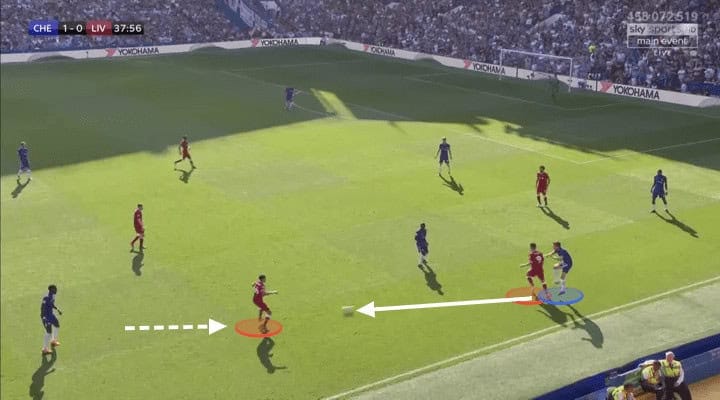
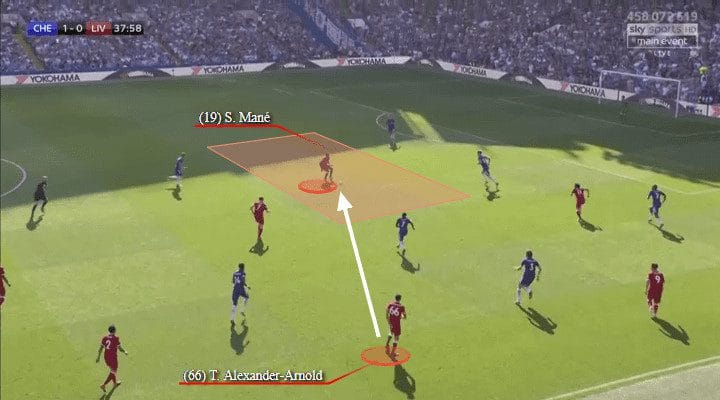
As he’s not the greatest in terms of aerial ability, Alexander-Arnold will often be the furthest withdrawn Liverpool player during set-pieces (unless he’s taking them).
His duty, if the ball is cleared by the opposition, is to press and retain the ball so that Liverpool can keep possession in advanced areas.
Since he is often situated in a central position in such moments, Alexander-Arnold can utilise his passing range from a quarterback like position and swiftly restart the onslaught of Red’s pressure.
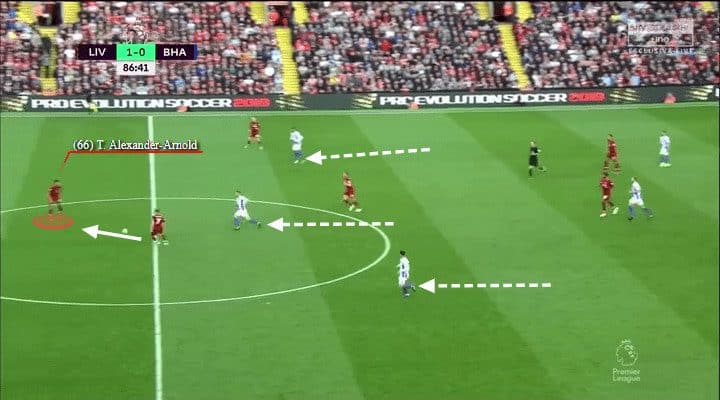
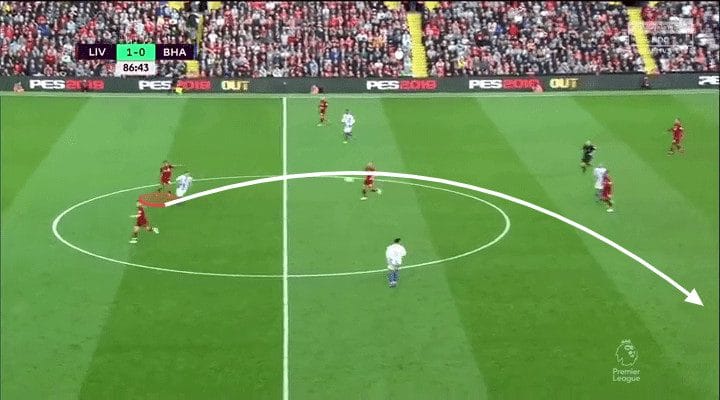
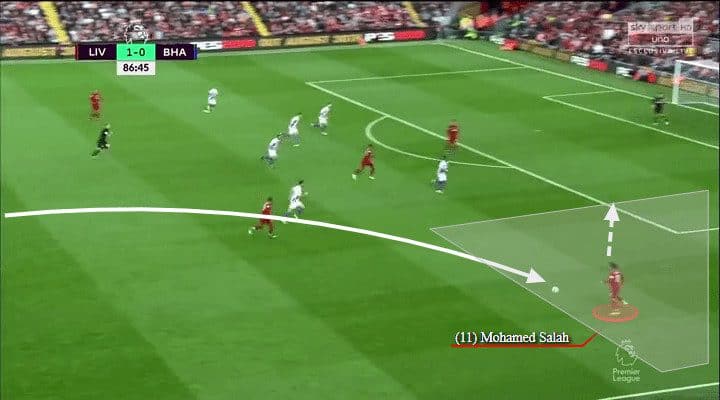
Almost considered essential for a full-back in the modern era, crosses are another one of Alexander-Arnold’s most obvious qualities.
Since he is often the widest right option for Liverpool in attack, Trent is often tasked with crossing the ball from the right flank which he consistently provides.
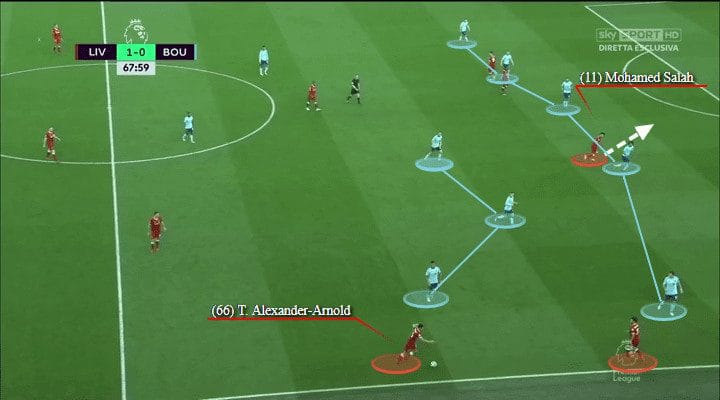
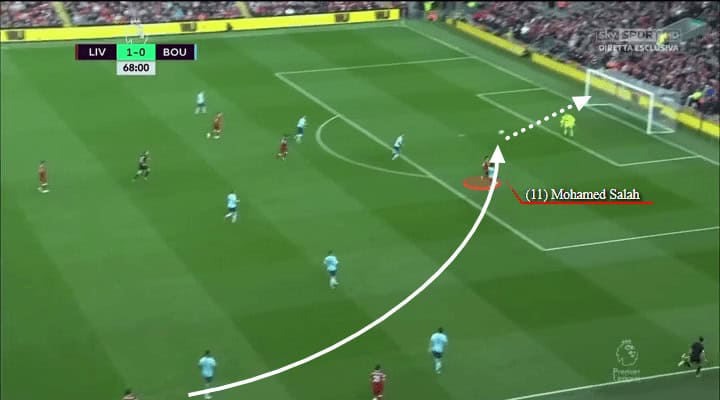
His quality delivery is also evident in his set pieces.
Not many 19-year-olds would be given such responsibility in a team of Liverpool’s calibre, but Trent Alexander-Arnold can be frequently seen taking free-kick responsibilities for the Reds, he’s even scored one against Hoffenheim.
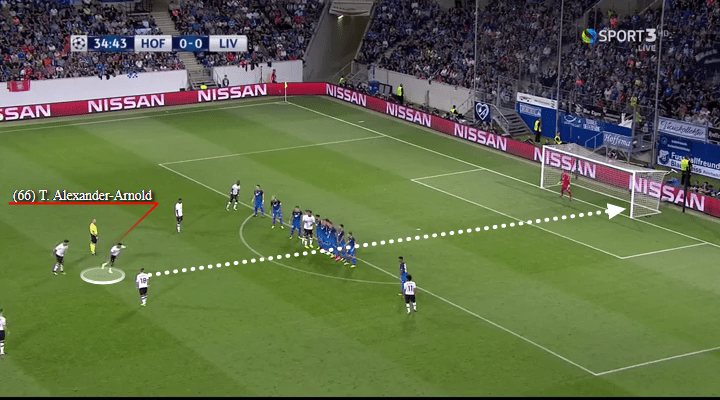
Gegenpressing
Jürgen Klopp sides are infamous in footballing circles for what he labels as “heavy metal football”.
His attributed pressing style ’Gegenpressing’ demands that his players win the ball back immediately after it is lost.
One player will instantly press the ball carrier aggressively while his teammates support and cut off all short-range passing options.
When opponents attempt to play out form the back, Liverpool’s players will press heavily when the ball is in the half-spaces (the 2nd and 4th of the 5 vertical dividing lanes of a football pitch).
They do so in a hope to force their opposition wide where the full-backs press aggressively in a hope that the ball will be passed backwards or launched forward where their centre-backs and goalkeeper can recover it.
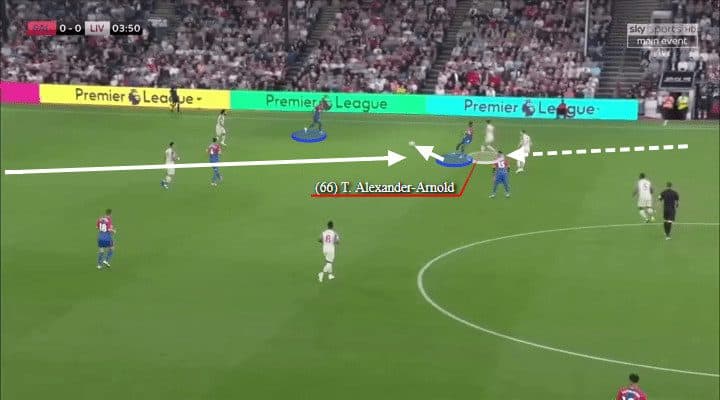
This aggressive press can be used to keep the opposition penned into their own defensive third.
Liverpool position their aggressive and pacey full-backs very high during corner kicks in the attempt to stop the opposition breaking out and perhaps counter-attacking.
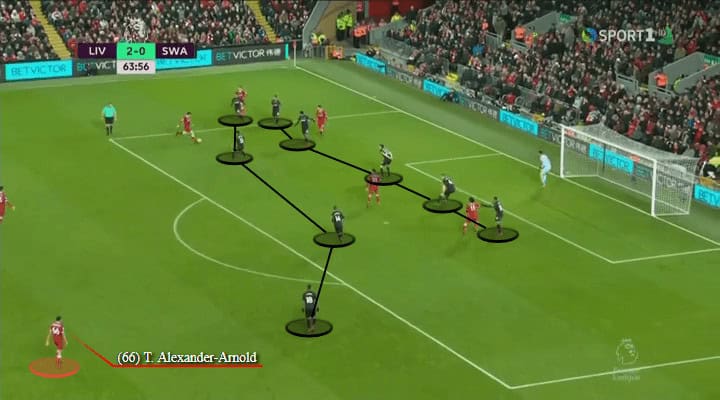
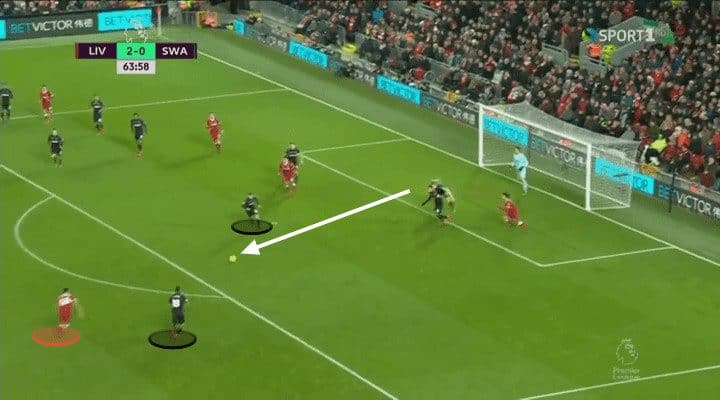
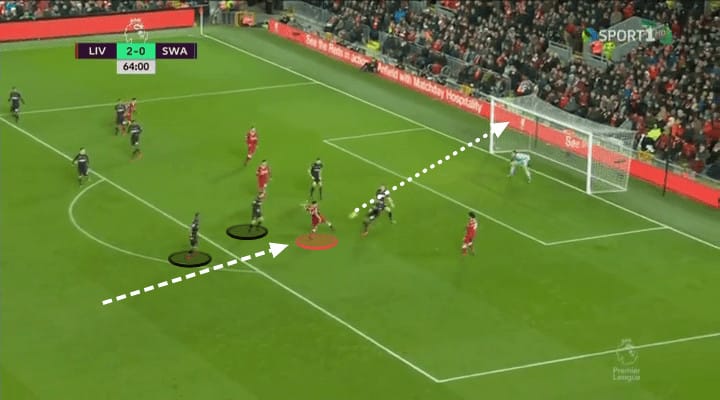
Sometimes, on occasion, Alexander-Arnold actually has to be a regular old right-back and track the opposition’s left-winger.
There aren’t many wingers more difficult to face than Manchester City’s Leroy Sane.
In the Champions League quarter-final tie of 2018, Liverpool fans feared the worse when the prospect arose of Alexander-Arnold being responsible to mark German winger Sane.
But the Liverpool academy graduate rose to the challenge and kept Sane at bay, for the most part.
Not an easy task and definitely unexpected for such an inexperienced defender.
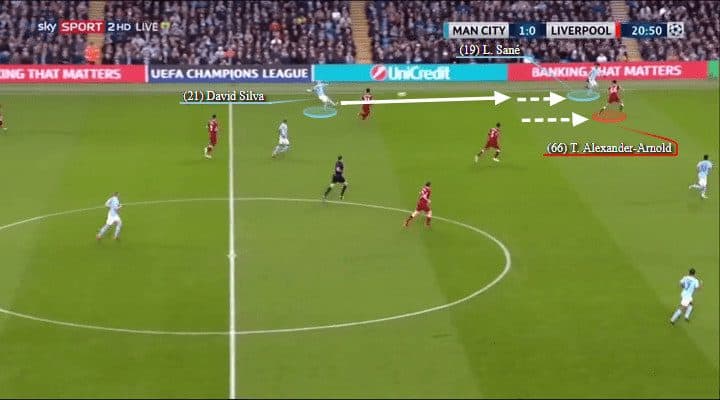

Conclusion
He’s only 19 and we’re only 3 games into the new season but Trent Alexander-Arnold is rapidly cementing himself as a vitally important player in what is undeniably one of the most exciting teams in Europe on current form.
In 2018 alone, the 19-year-old Liverpudlian has competed in a Champions League Final as well as the World Cup.
His spatial awareness, quality in possession and athleticism were of the required exceptional level to impress and earn a starting spot at a club the size of Liverpool’s and his character has been of the required quality to hold onto it.
No doubt he’ll have his sights set on a regular England starting spot as well.





Comments